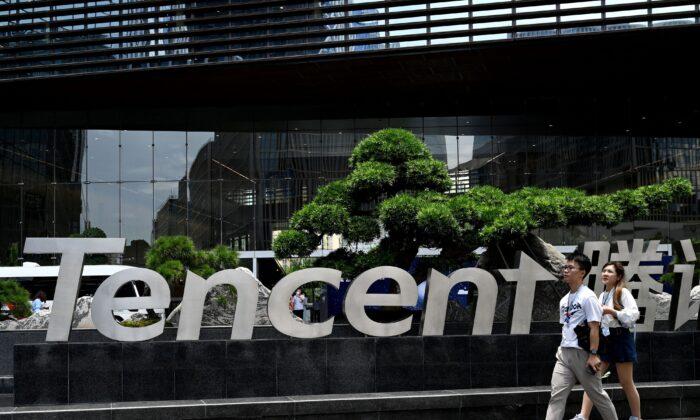When President Joe Biden signed the Inflation Reduction Act into law in 2022, the U.S. government gained the ability to negotiate prices on expensive prescription drugs for the first time ever. Though the bill’s effects will not be felt until 2026, it is intended to lower costs for covered users by billions of dollars annually, passing savings onto taxpayers.
Who Does This Affect?
The Department of Health and Human Services (HHS) is negotiating prices for 60 drugs for Medicare beneficiaries by 2028.Medicare Part A is hospital insurance, Part B is medical insurance, Part C (also known as Medicare Advantage) is a private plan approved by Medicare that offers additional insurance, and Part D is insurance for prescription drugs.
According to
program data, 67.2 million people were enrolled in Medicare as of March 2024.
The drug prices affect how much Medicare pays, as well as the out-of-pocket cost for enrollees. A separate provision in the IRA capping out-of-pocket costs for enrollees to $2,000 per year will go into effect in 2025.
Private health insurers already negotiate drug prices with pharmaceutical companies, and the IRA does not affect this.
When Will Prices Change?
Last year, HHS selected the
first 10 drugs for price negotiation, and the agreed-upon prices will go into effect in 2026.
The Centers for Medicare & Medicaid Services (CMS), which is part of HHS, will post the negotiated prices on Sept. 1.
In 2025, HHS will select the next 15 drugs for price negotiation, and those prices will take effect in 2027. Another 15 drugs will be selected for negotiation in 2026, and they will go into effect two years later, in 2028.
From 2027 onwards, HHS will select 20 additional drugs each year for negotiation, with prices taking effect two years later.
Which Drugs Will Have Prices Negotiated?
The first 10 drugs selected were Eliquis, Jardiance, Xarelto, Januvia, Farxiga, Entresto, Enbrel, Imbruvica, Stelara, and Fiasp (also sold under Fiasp FlexTouch, Fiasp PenFill, NovoLog, NovoLog FlexPen, or NovoLog PenFill).About
7.7 million Medicare enrollees (approximately 15 percent of Medicare Part D employees in 2022) spent $46.4 billion on these 10 drugs from the start of June 2022 to the end of May 2023, making up about 20 percent of drug spending covered by Part D. This included $3.4 billion in
out-of-pocket costs.
The total spend was more than double the $20 billion enrollees spent on the same drugs in 2018, and the rate of growth for these drugs was three times as fast as all Part D drugs, according to the Assistant Secretary for Planning and Evaluation (ASPE) analysis of Medicare data. ASPE is an interagency policy research branch that advises the HHS. The increase may not have been entirely due to drug price increases but could reflect an increase in enrollees needing the drugs as well.
Crowdfunding efforts by patients needing some of these drugs suggest not all who need them can afford them: there are more than 450 GoFundMe pages raising money for patients needing Eliquis, a blood thinner, and 1,000 such pages for the immunosuppressive drug Stelara.
There are several conditions governing which drugs HHS can select for negotiation.
First, the drugs and biologics have to have had FDA approval for at least seven or 11 years, respectively; this means they have already been on the market for some time.
The drugs
must have no generic or biosimilar competition and cannot be “orphan drugs,“ which are intended to treat often life-threatening conditions that affect fewer than 200,000 people. They also cannot be ”low-spend” drugs on which less than $200 million is spent under Medicare Part B and Part D per year unless they are small biotech drugs.
Then, HHS will rank the eligible drugs by gross Part D spend and choose from the top of the list, excluding biologics that are likely to have a biosimilar (generic drug) come on the market soon.
After the government makes its list of drugs, it will make an
offer, and drug manufacturers will have a deadline to present a counteroffer. After the negotiation period, CMS will publish final agreed-upon prices before they go into effect the following year. A drug company may
opt out of negotiations, pulling the product from Medicare and Medicaid, or opt out of negotiations but pay a large tax that may result in a higher cost for the manufacturer than the price of negotiations.
Medicare Plan D is
required to carry at least two drugs in each of the most commonly prescribed categories and classes. This requirement ensures that patients have access to a variety of medications. With the planned volume of drugs slated for negotiation, it may be unlikely that a manufacturer declining to negotiate would conflict with this rule. CMS did not comment by the time of this publication.
How Much Will Prices Change?
We won’t know for sure until the new prices are released on Sept. 1.
CMS is required to
consider several factors as it makes initial offers in drug price negotiations, including the cost of developing the drug and its cost of production; whether federal funding contributed to the development of the drug; U.S. market data; and data regarding the drug’s patents, sales, and revenue.
According to the ASPE analysis, seven of the first 10 drugs selected for price negotiation received some
sort of federal support. This is not only limited to direct funding but also includes claiming tax credits on research and development costs or obtaining a “government interest” patent. The ASPE argues that such assistance should factor into negotiations.
The stakeholders are supposed to take these factors into consideration and come to an agreement on the “maximum fair price,” which will subsequently be subject only to yearly price increases based on inflation.
In addition to the negotiations, the IRA applies an inflation rebate, requiring drug companies to pay back Medicare if they raise their prices higher than the rate of inflation. This resulted in 64 drugs through Medicare Part B having lowered coinsurance rates starting July 1. Some
750,000 people use these drugs, and they could save as much as $4,000 this year.
The Congressional Budget Office (CBO)
estimates the price negotiations will save $25 billion through 2031.
Another provision of the IRA caps out-of-pocket costs for individuals. In 2026, that cap will be lowered to $2,000.
Lawsuits in Progress
Even before the first 10 drugs were selected for negotiation, pharmaceutical companies filed more than a dozen lawsuits against the government arguing the new rule was unconstitutional. A case brought by Astellas Pharma was dropped after the list of 10 was released, as it did not include drugs by Astella—specifically, the prostate cancer treatment Xtandi.The remaining cases by Janssen, AstraZeneca, Novo Nordisk, and Bristol Myers, are either being litigated or in the appeal stage. Of the cases judges have already ruled on, all were found in favor of the government.
Companies largely argued the process violated the Takings Clause of the Fifth Amendment with the government taking the companies’ property without just compensation.
Some also argued the new process violated the First Amendment because companies would need to sign an agreement describing the process as a “negotiation” when they believed it was not a true negotiation. Others argued it violated the Eighth Amendment because it imposed an excessive fine.
Judges ruled that because participation in Medicare and Medicaid was voluntary, the government establishing rules for how it purchases drugs and spends taxpayer money did not infringe on the companies’ rights.
U.S. District Judge Michael Shea
ruled in favor of the government in a case brought by Boehringer Ingelheim (BI) Pharmaceuticals just this month.
“BI had the option to withdraw from Medicare and Medicaid before any taking or deprivation of its property interests,” the ruling reads. The judge also noted that courts have found that programs requiring drugs to be sold at a discounted price to the Veterans Health Administration did not constitute a violation of the takings clause, providing precedent for this new wave of lawsuits.
While withdrawing from the government programs may result in a loss for the drug companies, “economic hardship is not equivalent to legal compulsion for purposes of takings analysis,” the judge wrote, quoting precedent.
Georgetown University Law Center’s O'Neill Institute for National and Global Health Law has a
litigation tracker that displays the progress of each lawsuit, important court dates, and court filings.
Medicare already sets prices for other services, such as with physicians and hospitals, and the relationship with drug companies is actually the exception rather than the norm. According to a Kaiser Family Foundation (KFF)
analysis of drug spending, by 2017, Medicare accounted for 40 percent of the U.S. market for prescription pharmaceuticals. KFF is an independent health policy information organization.
Ripple Effect
Some experts and lawmakers who voted against various iterations of the IRA have voiced concern over the unintended negative effects of Medicare price negotiations while acknowledging that the concerns remain hypothetical due to the complex nature of drug sales and pricing.
As the new dynamic between the government and drug companies takes shape over the next few years, here are some things to watch for.
One criticism is that the negotiation functions like a price cap and may de-incentivize pharmaceutical companies to invest in intensive research and development for innovative, complex drugs.
However, the counterargument is that drug companies have, over the years, increasingly left this kind of research and development
up to academic institutions (many of which receive public funding), purchasing the drugs afterwards. If this is the case, the pharmaceutical company is not taking on the upfront investment risk.
The amount of savings the negotiations will garner has also been called into question because a separate IRA provision caps out-of-pocket costs for enrollees to $2,000 beginning in 2026. This is projected to save
18.7 million enrollees $7.8 billion and could partially offset savings for the government from drug price negotiations. CBO
estimates this subsidy could cost the government $2 billion through 2031.
Another issue brought before lawmakers debating the IRA was drug launch prices. Proponents of lowering drug prices argued the bill did not address
high launch prices, while others warned that the prospect of having to negotiate drug prices with HHS could lead to pharmaceutical companies pricing drugs higher at launch in response. Congress asked the CBO to analyze this possibility, and the CBO
projected that drug companies will indeed raise launch prices, primarily in response to the inflation rebate provision, and mainly affect Medicaid and Medicare Part B.
“The negotiation provision (section 129001) would have less of an impact on launch prices, CBO expects: Although the ceiling for a drug’s negotiated price is based on its price from a prior year, negotiation could not occur until drugs were on the market for a number of years—at least 7 for small-molecule drugs and 11 for biologics,” CBO director Phillip Swagel stated.
Drug makers had also told lawmakers that the IRA could de-incentivize companies from bringing generics to market. Generic drugs are made and sold only after the patent for a specific drug expires, and
they become available at lower prices than their brand-name counterparts. The argument is that if Medicare negotiations suppress brand-name drug costs, it similarly imposes a ceiling on the already-lower profit margins for generic drugs manufactured later. Currently, the first generic to market is also allowed a period of exclusivity—180 days.
Some have also argued that Medicare-negotiated prices may inform state-level regulations affecting drug prices or, in the private insurance realm, if other insurers start to look to Medicare prices to set the bar.
Whether the government’s new authority to negotiate drug prices will have effects beyond Medicare remains to be seen, and effects may not be felt until several years down the road.







